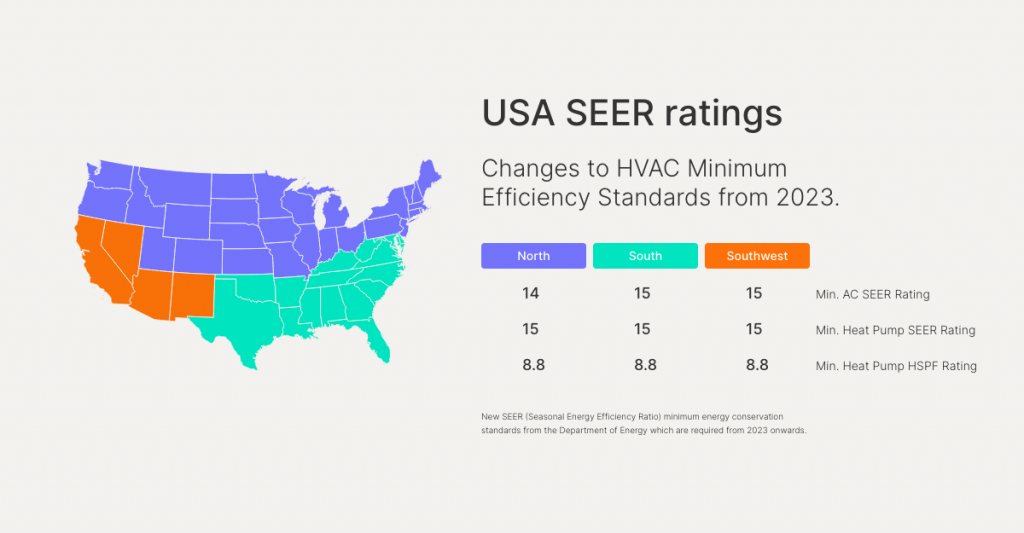Changes to HVAC Minimum Efficiency Standards are coming in January 2023, these will have a significant impact on HVAC servicing businesses and the prices of HVAC products. In this article we outline the what the changes will mean to your HVAC servicing business and why you need to start taking action now.
What are the changes to the Minimum Efficiency Standards?
In 2023, there will be an increase in the minimum efficiency standard for all HVAC systems. This means that lower SEER (Seasonal Energy Efficiency Ratio) rating systems cannot be manufactured or installed from 2023.
The first of these standards were introduced with The National Appliance Energy Conservation Act 1987. These set the energy usage requirements for air-conditioning and heat pump equipment in the United States. Further updates to the standards went into effect in 1992, 2006 and most recently 2015.
Changes to standards in the United States
In the US the minimum SEER ratings will increase from 13.0 to 14.0 in northern states and 14.0 to 15.0 SEER in the south. For more on how the boundaries of these states are defined and more from the Department of Energy on this subject follow this link. Learn more.
Another significant change US based HVAC contractors need to be aware of is the migration of new M1 metrics SEER2, EER2 and HSPF2. Changes in these metrics were made to better recreate in the field conditions, giving a more accurate reading on the efficiency of the units. This will create notable different numerical values than the current metrics.
| 2023 – M1 metrics update | All | North | South | South West | South West |
|---|---|---|---|---|---|
| Type | HSPF (HSPF) | SEER2 (SEER) | SEER2 (SEER) | SEER2 (SEER) | EER2 (EER) |
| AC < 45k BTU/Hr | – | 13.4 (14) | 14.3 (15) | 14.3 (15) | 11.7 (12.2) |
| *New AC < 45k BTU/Hr | – | 13.4 (14) | 13.8 (14.5) | 13.8 (14.5) | 11.7 (12.2) |
| Heat Pump | 7.5 (8.8) | 14.3 (15) | 14.3 (15) | 14.3 (15) | – |
| Packaged Units | 6.7 (8.0) | 13.4 (14) | 13.4 (14) | 13.4 (14) | 10.6 (11) |
Changes to standards in the United Kingdom
The European equivalent of these stands is referred to as the ESEER, however it is effectively the same measurement. In March 2021 the Government launched an Ecodesign Directive which outlined the minimum efficiency standards for appliances, these included heating and cooling systems.
They followed up this report with the Heat and Building Strategy October 2021. This report has outlined more detail around plans for reducing carbon emissions and creating more energy efficient heating and cooling appliance usage. The current minimum ESEER rating in the UK for HVAC systems is 14.
How the new standards will affect your HVAC business
Changes to the Minimum Efficiency Standards are expected in 2023, this might feel a long way off and you may believe a lot of the systems you presently service meet the minimum standards, however there will be impact on your HVAC servicing business particularly on the cost of machinery and the availability of parts.
The significant impact of the global supply chain issues faced by everything will continue to affect your inventory. Orders, services and repairs scheduled now will be several months from completion and as we approach the 2023 deadline this will create a backlog.
What is a SEER rating?
A Seasonal Energy Efficiency Ratio (SEER) is the maximum efficiency rating for air conditioning, heating and refrigeration units. It’s similar to emissions test on a vehicle or an Energy Performance Certificate on a building.
SEER measures how much energy the unit is using while it’s operational and the cost of running the unit. HVAC installation and service technicians need to be able to advise their customers on the cost effective use of air conditioning, heating and refrigeration units and they can use the SEER rating to do this.
How is a SEER rating calculated?
A SEER rating measures air conditioning efficiency. It’s basically the difference between two key measurements.
BTU (British Thermal Units) divided by watts per hour (Wh)
SEER=BTU/Wh
The more efficient the HVAC unit is, the higher the SEER rating will be.
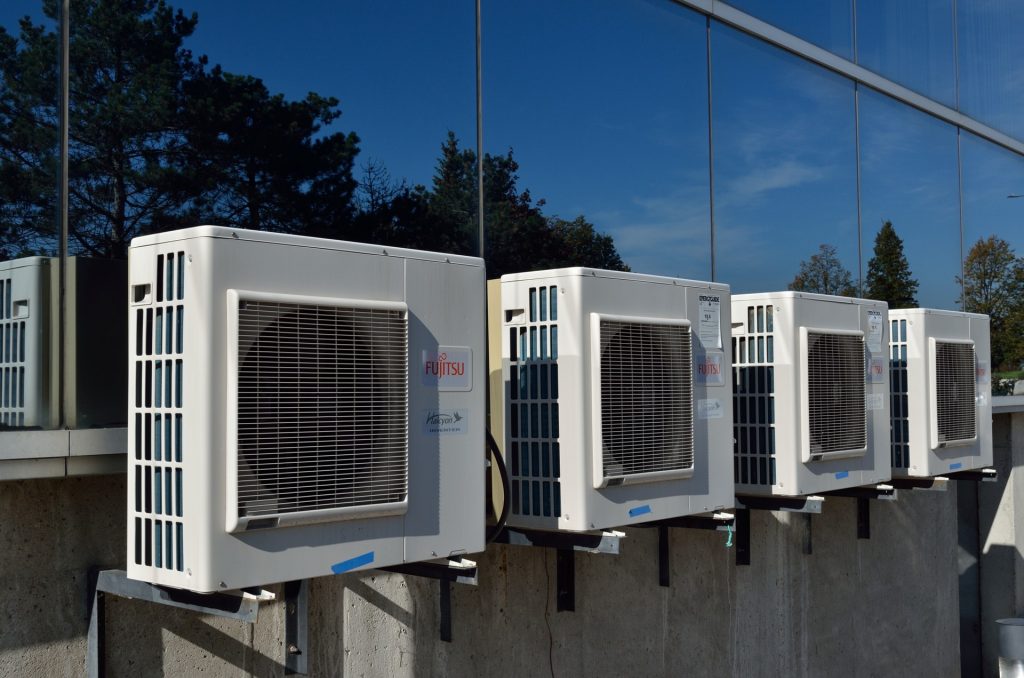
What advice should you give your customers ahead of the new Minimum Efficiency Standards?
The cost of HVAC systems have been steadily rising for a number of years. This trend is expected to continue and stock shortages will only drive prices higher.
Demand is also driving up prices and the HVAC market has seen rapid growth over the last few years. In a report from BIS Research the Heating, Ventilation and Air Conditioning market had an estimated value of $172 billion in 2017 and is expected to grow to $208 billion by 2024.
Here’s our suggestions of advice you can offer your customers ahead of changes to the Minimum Efficiency Standards:
Advise your customers to adopt Preventative Planned Maintenance schedules
The cost of running an inefficient system will rise and the limited availability of spare parts could delay repairs. This will have a huge knock on effect on the customer and could even affect revenue generation in some cases.
You can extend the life of a HVAC system by adopting a Planned Preventative Maintenance schedule. As the new Minimum Efficiency Standards come into force you may be required to carry out more inspections in a short period of time.
You’ll need to create an asset register and have the ability to schedule a series of services over any period of time, weeks, months and beyond. Klipboard makes PPM schedules for HVAC servicing simple by using out Asset Management tool. Learn more.
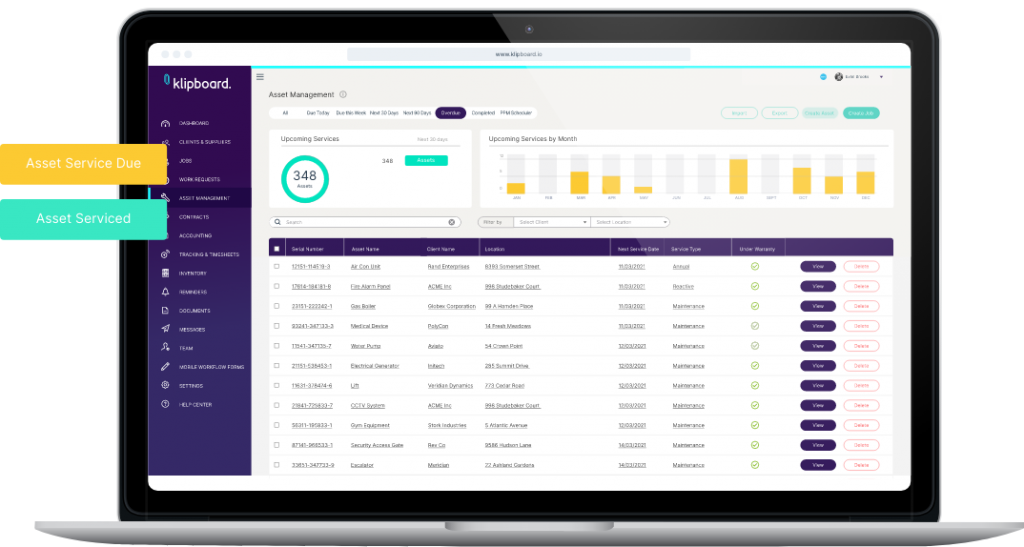
A proactive approach to servicing will pay off in the long term and could extend the life of systems that are currently operating within the minimum efficiency ratings.
Audit your customers HVAC units against the new standards
Before the regulation changes it would be advisable to offer your customers a comprehensive audit to determine the number of units they have that are either at the end of their life expectancy or will need immediate repairs. It would be useful for both you the servicing partner and the customer to know exactly how many of their units will fail to achieve the Minimum Efficiency Standards and their SEER ratings.
Take a look at the service history of your clients units and decide if there’s some which have required a greater than expected number of call-outs. The costs to the customer could be greatly reduced in the long term by a short term investment in a new system.
When upgrading from a 10 SEER rating unit to a 20 SEER a customer could normally experience twice the energy efficiency on that unit.
At the moment your customers have time on their side to make decisions based on the advice you can offer them. However, that time will run out so before stock shortages for HVAC units, Heat Pumps, refrigeration units and spare parts become an issue, give them the reports and data they need now.
How you can prepare your HVAC business for increased workload
As the HVAC market continues to grow and demand for your services increases you’ll be presented with a lot of challenges. Keeping up with the demands of your customer will be your primary concern and that will require better use of your time and improved communication.
How to more efficiently use your HVAC engineer’s time
Planning out the work load of your team can be challenging. It will be even more challenging when you add extra customers to your client base and you increase the number of services by introducing PPM schedules to limit breakdowns.
Start by using Job Management Software to plan out your team’s working week. Use a scheduler to assign jobs and issue job details directly to your engineers via their Field Service App. Klipboard uses a drag and drop scheduler to help you plot out your week and our mobile app means your team can instantly access all the job details they need.
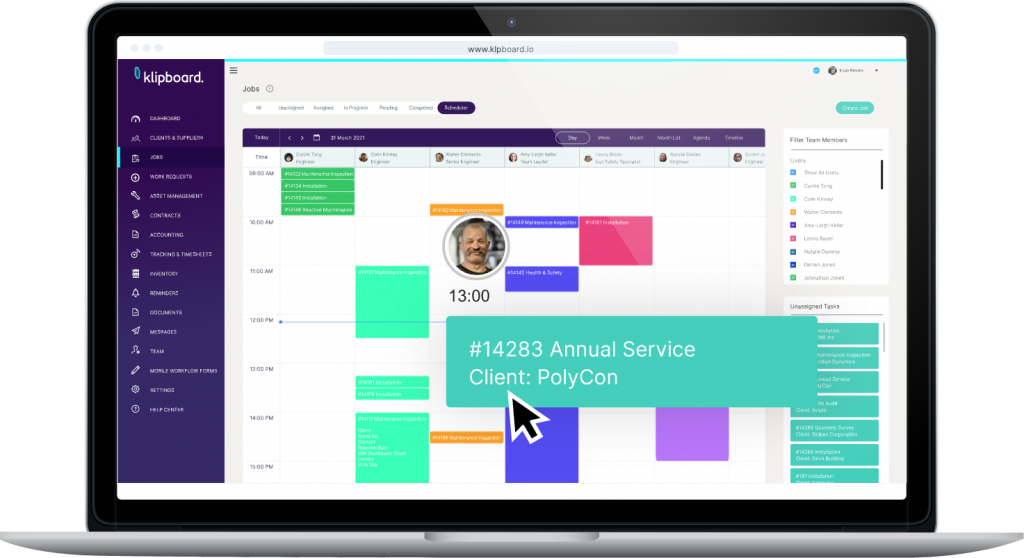
How to automate your customer communications
It’s easy to underestimate how time consuming it can be to communicate job bookings with your customers. Sending over inspection and repair reports to your customers can take hours out of your week and make you less productive.
Klipboard simplifies customer communication by automating more of your customer communication. This means you can get on with the job and our software will notify the customer when a job is booked, who it’s assigned to and when they should arrive.
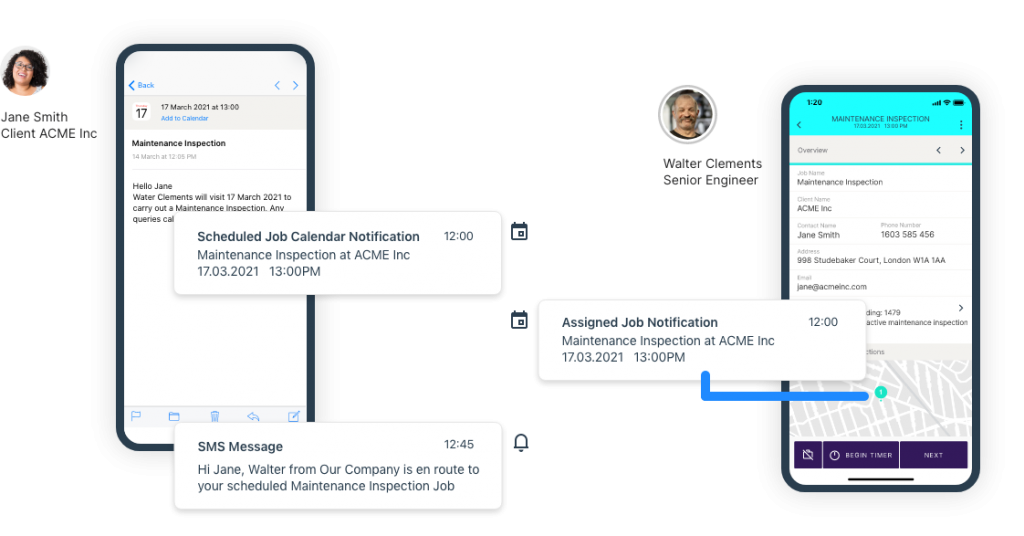
As the new Minimum Efficiency Standards come into force you’ll most likely need to create more reports for your customers outlining repairs, part failures and replacement units. Klipboard removes the need for extra admin by using the details entered on the Field Service App by your team and produces reports in PDFs from that information.
No more taking your work home with you, no more missed details and no more extra admin.
You can find out more on how you can greatly reduce your admin, complete more jobs and impress clients with custom reports by checking out our HVAC features page. Learn more.
